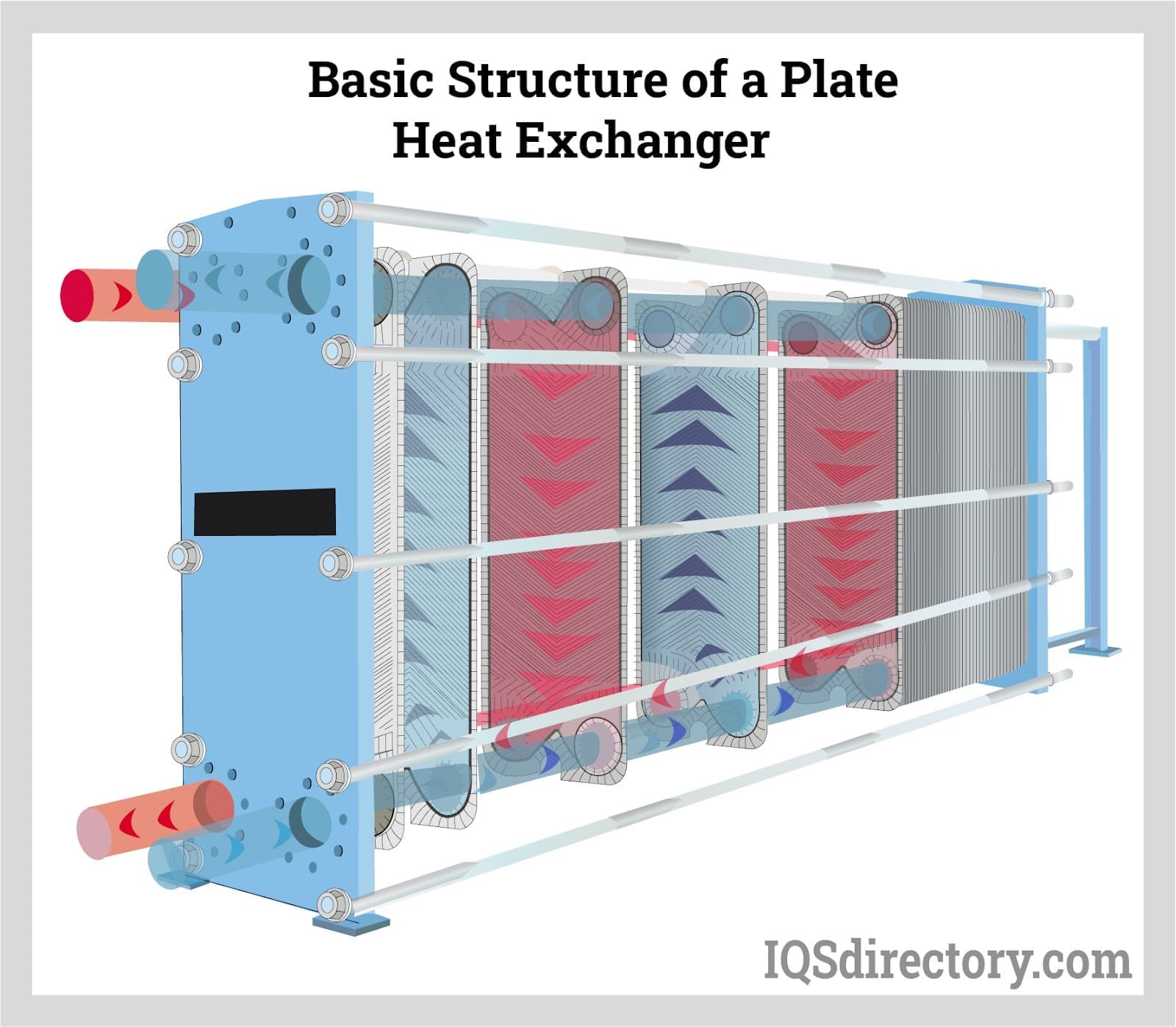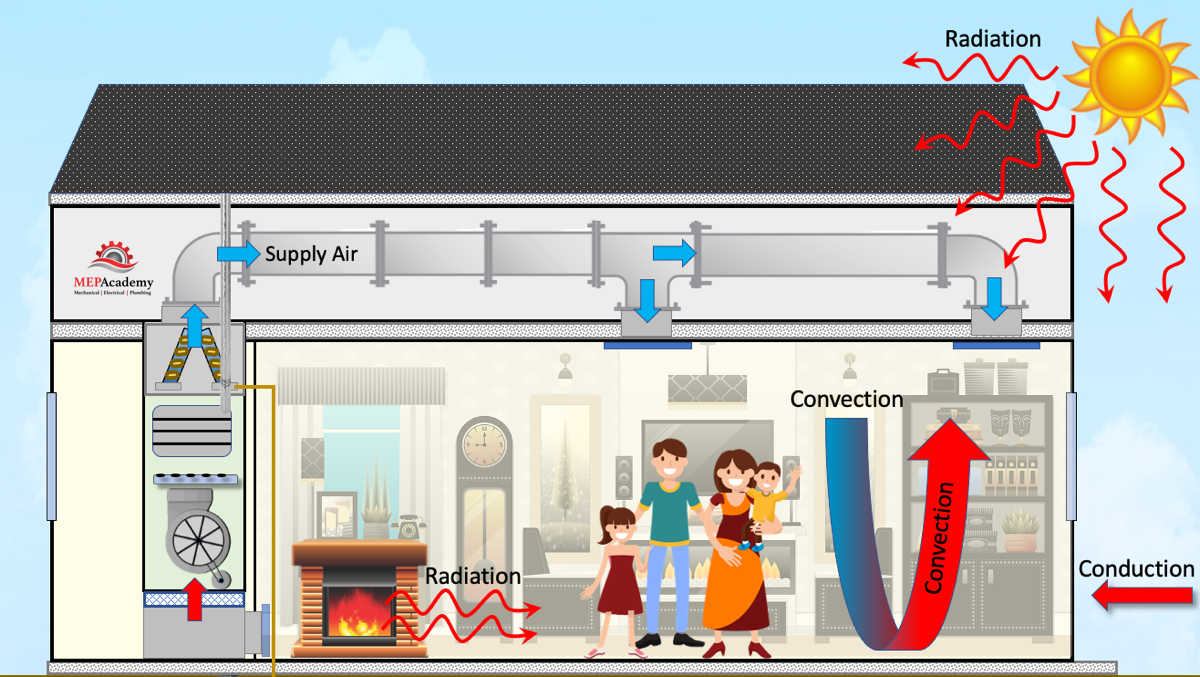How DVS Heat Transfer Systems Support Lifecycle Sustainability from Design to Disposal
The Function of Heat Transfer Solutions in Sustainable Power Solutions for the Future
Heat transfer systems are necessary in the pursuit for sustainable energy services. They optimize thermal power management, enhancing the performance of eco-friendly technologies. By using devices like radiation, transmission, and convection, these systems decrease energy losses. Their role in solar thermal and geothermal applications is particularly substantial. As technologies arise, the possibility for further developments elevates crucial concerns about future power techniques. What growths will form the landscape of sustainable energy?
Understanding Heat Transfer Equipments

The Significance of Thermal Power Monitoring
Effective thermal power monitoring is crucial for making the most of energy performance and reducing waste in different systems. By managing temperature level and maximizing Heat transfer processes, companies can significantly reduce energy usage and functional prices. Efficient management includes the execution of innovative innovations and practices that keep an eye on and control thermal problems within systems, guaranteeing that energy sources are used efficiently. Additionally, appropriate thermal energy administration contributes to minimizing greenhouse gas discharges, lining up with worldwide sustainability goals. It additionally enhances system reliability and efficiency, leading to improved product top quality and longer tools lifespan. Eventually, prioritizing thermal energy monitoring is an essential action towards developing a lot more sustainable energy solutions and cultivating a liable method to power usage in industrial and domestic contexts.
Applications of Heat Transfer in Renewable Power
While different renewable energy resources promise sustainability, the effective application of Heat transfer plays an essential duty in their efficiency. In wind energy systems, Heat transfer is made use of for wind turbine part air conditioning, improving efficiency and longevity. Geothermal energy counts on efficient Heat exchange between the earth's subsurface and the fluid distributing in the system, making best use of energy extraction. Biomass energy processes additionally profit from Heat transfer, as it aids in transforming natural products right into useful fuel with pyrolysis and gasification. Furthermore, in hydropower, preserving ideal temperature levels in tanks can boost energy result. Each of these applications shows the crucial relevance of Heat transfer systems in enhancing renewable resource technologies, ultimately adding to an extra lasting power future.
Enhancing Solar Thermal Power Effectiveness
As solar thermal power systems proceed to develop, enhancing their performance has come to be important for maximizing power output. Breakthroughs in Heat transfer modern technologies, such as improved thermal storage space materials and cutting-edge Heat exchangers, play a significant function in boosting efficiency. By utilizing sophisticated products that have superior thermal conductivity, systems can catch and move Heat better. In addition, integrating tracking systems that adhere to the sun's path warranties that collectors receive suitable solar direct exposure throughout the day. Making use of nanotechnology in solar absorbers can even more boost power absorption rates. Integrating automatic control systems assists manage and control temperatures power circulation efficiently, leading to minimized losses and improved overall system efficiency. These enhancements lead the means for more lasting solar thermal power remedies in the future.
Geothermal Home Heating: A Sustainable Remedy
Geothermal heating presents a feasible choice for sustainable energy, offering significant environmental advantages through minimized greenhouse gas emissions. Its efficiency and cost-effectiveness make it an eye-catching option to traditional heater. Nonetheless, obstacles associated to implementation must be dealt with to maximize its potential influence.
Environmental Advantages of Geothermal
Although standard heating techniques add substantially to greenhouse gas exhausts, geothermal home heating presents a compelling choice that reduces ecological impact. By harnessing the Earth's inner Heat, geothermal systems use a renewable energy resource, markedly minimizing reliance on fossil gas. This technique generates minimal carbon emissions, making it a cleaner choice for commercial and property home heating. Additionally, geothermal systems advertise energy effectiveness, as they require much less power contrasted to traditional furnace. DVS Heat Transfer Systems. The application of geothermal energy also helps in decreasing air pollution, improving regional air quality and public health and wellness. As a lasting option, geothermal heating sustains environment adjustment mitigation efforts, placing itself as an essential element in the shift towards a greener future
Efficiency and Cost-Effectiveness
How does geothermal heating gauge up in regards to performance and cost-effectiveness contrasted to standard heating systems? Geothermal home heating demonstrates remarkable effectiveness, usually attaining a coefficient of performance (POLICE) of 3 to 5, meaning it produces three to five units of Heat for every single system of electrical energy consumed. This efficiency converts into lower operating costs, specifically in areas with stable geothermal resources. Preliminary installation prices can be more than traditional systems; however, long-lasting cost savings on energy costs and minimized maintenance expenses can balance out these upfront financial investments. Furthermore, lots of governments incentivize geothermal systems via discounts and tax obligation credit scores, enhancing their cost-effectiveness. Overall, geothermal heating becomes a financially practical and sustainable option to even more traditional heating remedies.
Application Difficulties and Solutions
Numerous obstacles can impede the widespread implementation of geothermal heating unit, despite their clear benefits as a sustainable energy remedy. High initial installation expenses typically hinder financiers and home owners, making financing a substantial obstacle. Additionally, the geographical restrictions of ideal geothermal sites restrict ease of access in specific regions. Neighborhood additional resources regulations and permitting procedures can likewise complicate job growth, bring about delays. Furthermore, public recognition and understanding of geothermal systems stay reduced, preventing approval. To attend to these challenges, targeted education and learning projects can improve public expertise, while government incentives could ease economic worries. Collaborating with local authorities to streamline policies may facilitate smoother job authorizations, eventually advertising the fostering of geothermal heating as a viable, lasting power choice.
Technologies in Heat Transfer Technologies
Technologies in Heat transfer modern technologies play an essential duty in boosting energy effectiveness and sustainability. Advanced Heat exchangers and phase change materials go to the leading edge of these growths, using significant renovations in thermal monitoring. These modern technologies not only maximize energy use but likewise add to minimizing ecological impact in different applications.
Advanced Heat Exchangers
Advanced Heat exchangers play an important role in boosting energy performance across numerous applications in sustainable power services. These tools assist in the transfer of Heat in between two or even more fluids, substantially lowering energy intake in processes page such as commercial heating, air conditioning, and power generation. Technologies in products and design, such as using nanofluids and portable arrangements, have led to boosted thermal performance and minimized size demands. Additionally, innovations in digital surveillance and control systems permit maximized operation, additional increasing effectiveness. By decreasing waste Heat and making best use of energy recovery, advanced Heat exchangers add to decrease carbon footprints and support the change towards ecologically pleasant innovations. Their proceeded development is crucial for accomplishing international energy sustainability objectives.
Stage Change Materials
The assimilation of stage change products (PCMs) right into Heat transfer technologies represents a significant development in power administration and performance. PCMs absorb and launch thermal power throughout their stage changes, allowing reliable temperature level regulation in building materials and energy systems. By saving excess Heat throughout peak periods and releasing it when demand increases, PCMs contribute to fill changing and power preservation - DVS Heat Transfer Systems. This capacity boosts the efficiency of renewable energy systems, particularly in solar thermal applications. Additionally, PCMs can improve the thermal convenience of interior atmospheres, reducing dependence on traditional heating and cooling down techniques. As technologies in PCM formulations proceed to arise, their function in lasting energy remedies is positioned to expand, using appealing opportunities for future research and application

Future Prospects for Heat Transfer in Lasting Power
As the demand for sustainable energy remedies continues to increase, the duty of Heat transfer systems is becoming progressively critical fit future modern technologies. Technologies in layouts and products are anticipated to enhance efficiency in Heat transfer, minimizing power losses in different applications. The integration of sophisticated thermal storage space systems, such as phase adjustment materials and thermochemical storage space, will allow better monitoring of power sources. Study right into nanofluids and biomimetic Heat exchangers might further enhance thermal efficiency. The adoption of smart technologies will certainly allow for real-time surveillance and adaptive control of Heat transfer procedures. These innovations are positioned to greatly add to the overall efficiency and sustainability of energy systems, leading the method for a more energy-efficient future.
Often Asked Concerns
Just How Can People Apply Heat Transfer Equipment in your home?

People can carry out Heat transfer systems at home by mounting energy-efficient home appliances, making use of glowing home heating, and enhancing insulation. These actions boost power efficiency, decrease costs, and advertise sustainable techniques in household atmospheres.

What Are the Costs Related To Setting Up Heat Transfer Systems?
The costs connected with installing Heat transfer systems differ commonly, normally including devices, setup labor, and maintenance. Elements such as system type, home dimension, and neighborhood laws significantly influence the total expenditure included.
Are There Government Incentives for Heat Transfer System Installations?
Government rewards for Heat transfer system installations differ by area and can consist of tax gives, refunds, and credit ratings. These economic benefits intend to encourage adoption, ultimately advertising energy performance and lowering environmental influence within neighborhoods.
How Do Heat Transfer Systems Influence Energy Costs?
Heat transfer systems especially influence power costs by enhancing power effectiveness. By improving the transfer of Heat, these systems lower energy consumption, resulting in lower utility prices and producing an extra sustainable strategy to energy management.
What Upkeep Is Required for Heat Transfer Equipments?
Maintenance for Heat transfer systems consists of regular examinations, cleaning of components, inspecting liquid levels, making sure correct insulation, and changing worn parts. These jobs aid preserve performance, avoid break downs, and prolong the system's functional life-span.
These systems facilitate the motion of thermal power from one tool to another, enabling the transfer of Heat for air conditioning, home heating, or energy generation functions. Geothermal energy counts on reliable Heat exchange between the planet's subsurface and the fluid distributing in the system, taking full advantage of power removal. In addition, geothermal systems advertise energy efficiency, as they require much less energy compared to conventional heating resource systems. Advanced Heat exchangers play an essential role in boosting power performance throughout numerous applications in lasting power options. Heat transfer systems significantly affect power costs by optimizing power efficiency.